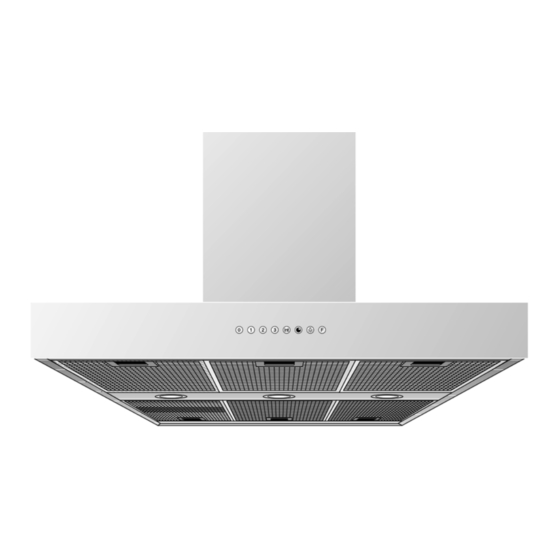Gaggenau AH 590-720 Betriebs- und Montageanleitung - Seite 4
Blättern Sie online oder laden Sie pdf Betriebs- und Montageanleitung für Lüftungshaube Gaggenau AH 590-720 herunter. Gaggenau AH 590-720 10 Seiten. Freely suspended insular hood
Auch für Gaggenau AH 590-720: Betriebs- und Montageanleitung (10 seiten)

6.2 Installation
WARNING - TO REDUCE THE RISK OF FIRE,
ELECTRIC SHOCK, OR INJURY TO PERSONS,
OBSERVE THE FOLLOWING:
a.) Installation work and electrical wiring must be
done by qualified person(s) in accordance with
all applicable codes and standards, including
fire-rated construction.
b.) Sufficient air is needed for proper combustion
end exhausting of gases through the flue
(chimney) of fuel burning equipment to prevent
back drafting. Follow the heating equipment
manufacturer's guideline and safety standards
such as those published by the National Fire
Protection Association (NFPA), and the American
Society for Heating, Refrigeration and Air
Conditioning (ASHRAE), and the local code
authorities.
c.) When cutting or drilling into wall or ceiling, do
not damage electrical wiring and other hidden
utilities.
d.) Ducted fans must always be vented to the
outdoors.
e.) If this unit is to be installed over a tub or shower,
it must be marked as appropriate for the appli-
cation and be connected to a GFCI (Ground
Fault Circuit Interrupter) - protected branch
circuit.
f.) NEVER place a switch where it can be reached
from a tub or shower.
WARNING:
To reduce the risk of fire, use only metal ductwork.
14
All manuals and user guides at all-guides.com
The applicable regulations of the energy supply
companies and the regional construction regula-
tions must be observed when installing the hood.
The minimum distance from the worktop to the
bottom edge of the wall hood is for electrical appli-
ances 24 ´ ´ / 600 mm and for gas appliances 30 ´ ´ /
762 mm.
The extractor hood was conceived for the exhaust
air mode. The exhaust air can be routed into a se-
parate exhaust air shaft or directly into the open
through the outside wall.
It is not allowed to pass the exhaust air into a flue
or exhaust air chimney that is in operation or into a
shaft that is linked to the heating basement. Consult
the chimney sweep responsible for your district
whenever you wish to pass the exhaust air into a
chimney that is not in operation.
During the course of planning, a chimney sweep
must be consulted if a room air-dependent hearth
is operated in the same room as the one in which a
hood is operated in the exhaust air mode. Adequate
incoming air must be ensured. The applicable con-
struction and safety regulations must be observed.
Adequate incoming air must be ensured if a wood,
coal, gas or oil heater or an open hearth is operated
in the same room as the one in which the hood is
installed.
Safe operation is possible whenever the partial
vacuum in the place where the firing equipment
is installed does not exceed 4 Pa (0.04 mbar).
This can be achieved whenever the air needed for
combustion is able to enter through openings that
cannot be sealed, for example in doors, windows,
incoming/exhaust air wall boxes or by other techni-
cal means.
